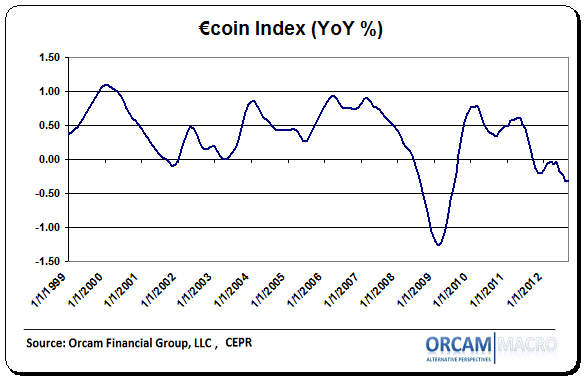The EuroCoin Index is a new indicator I’ve come across in various places offered by the CEPR. According to the CEPR the index:
“is a real-time, monthly estimate of area-wide GDP growth, computed each month by the staff of the Banca d’Italia. It provides a single number summarizing the current economic picture for the euro area.
€-coin collates a large collection of statistical data (industrial production, business surveys, stock market and financial data, demand indicators, and more) and extracts the information that is relevant to forecast GDP. It tracks underlying GDP growth, preceding official GDP releases by several months. Essentially, the index:(i) gives a monthly “smoothed” estimate of quarter-on-quarter GDP growth in the euro area;
(ii) highlights the underlying trend by adjusting the growth rate for short-term fluctuations and measurement errors; that is, the index figure is an indicator of the euro area’s actual growth momentum.”
The latest reading of -0.32% is consistent with recession in Europe and continuing weak economic conditions.
Mr. Roche is the Founder and Chief Investment Officer of Discipline Funds.Discipline Funds is a low fee financial advisory firm with a focus on helping people be more disciplined with their finances.
He is also the author of Pragmatic Capitalism: What Every Investor Needs to Understand About Money and Finance, Understanding the Modern Monetary System and Understanding Modern Portfolio Construction.


Comments are closed.